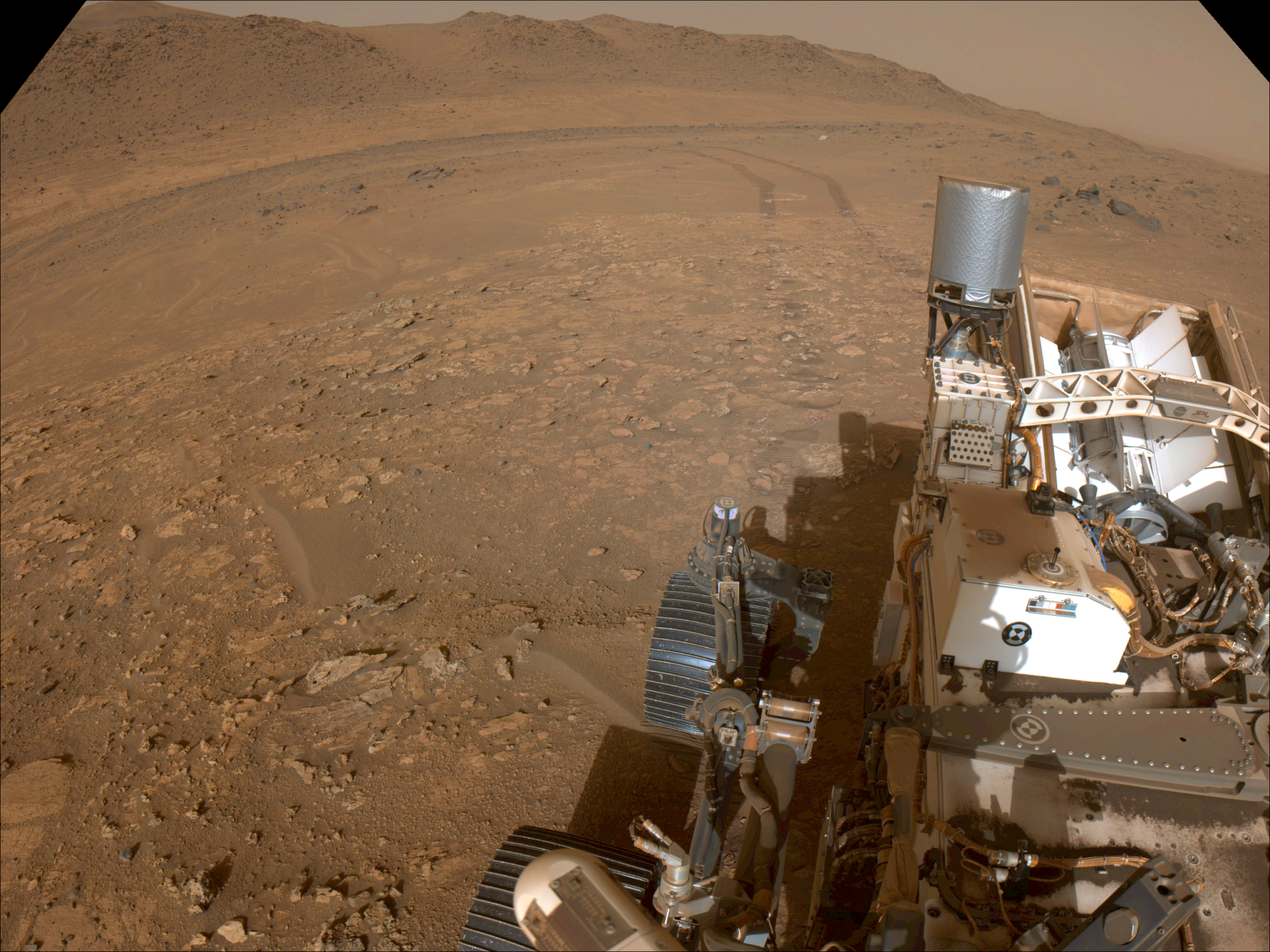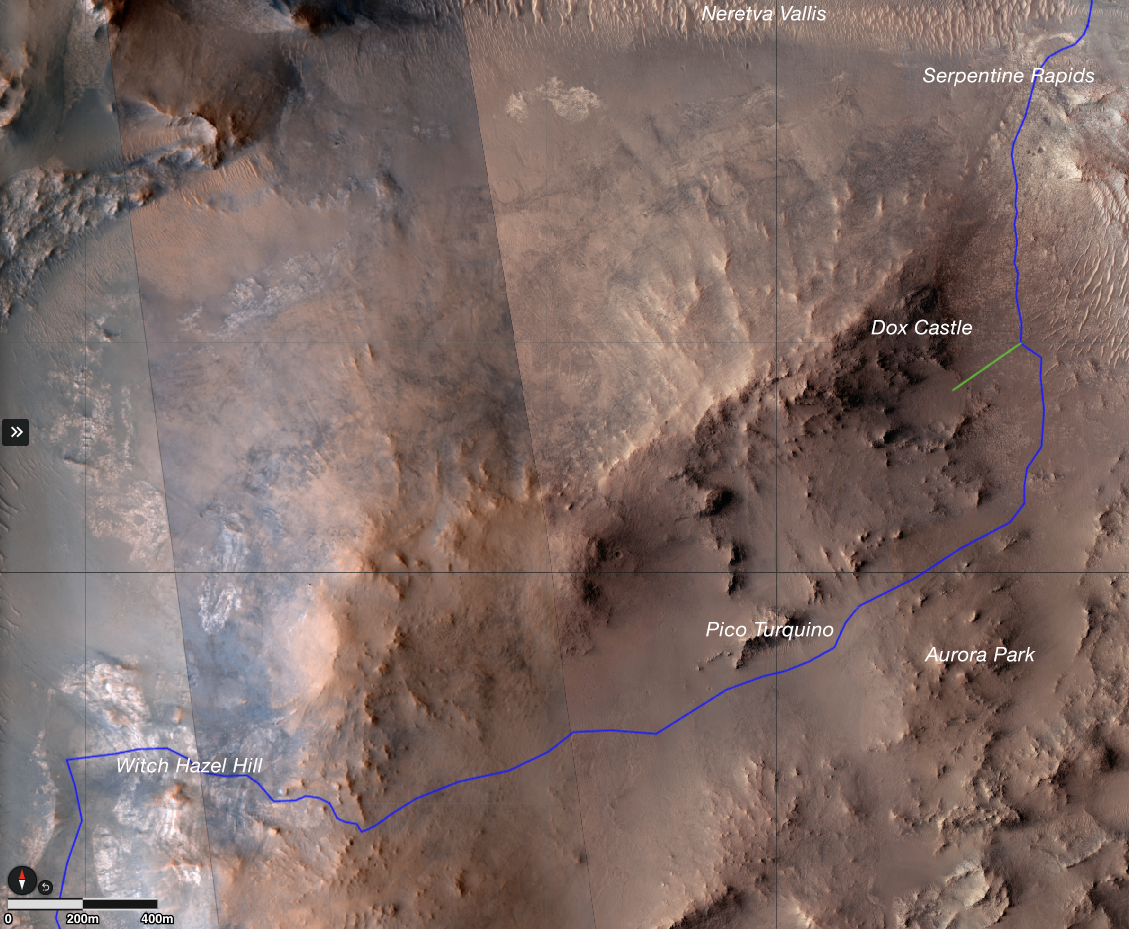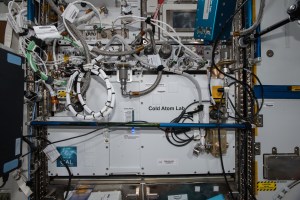5 min read
Preparations for Next Moonwalk Simulations Underway (and Underwater)  This panorama shows the area NASA’s Perseverance Mars rover will climb in coming months to crest Jezero Crater’s rim. It is made up of 59 images taken by the rover’s Mastcam-Z on Aug. 4.NASA/JPL-Caltech/ASU/MSSS After 2½ years exploring Jezero Crater’s floor and river delta, the rover will ascend to an area where it will search for more discoveries that could rewrite Mars’ history.
This panorama shows the area NASA’s Perseverance Mars rover will climb in coming months to crest Jezero Crater’s rim. It is made up of 59 images taken by the rover’s Mastcam-Z on Aug. 4.NASA/JPL-Caltech/ASU/MSSS After 2½ years exploring Jezero Crater’s floor and river delta, the rover will ascend to an area where it will search for more discoveries that could rewrite Mars’ history.
NASA’s Perseverance Mars rover will soon begin a monthslong ascent up the western rim of Jezero Crater that is likely to include some of the steepest and most challenging terrain the rover has encountered to date. Scheduled to start the week of Aug. 19, the climb will mark the kickoff of the mission’s new science campaign — its fifth since the rover landed in the crater on Feb. 18, 2021.
“Perseverance has completed four science campaigns, collected 22 rock cores, and traveled over 18 unpaved miles,” said Perseverance project manager Art Thompson of NASA’s Jet Propulsion Laboratory in Southern California. “As we start the Crater Rim Campaign, our rover is in excellent condition, and the team is raring to see what’s on the roof of this place.”
Two of the priority regions the science team wants to study at the top of the crater are nicknamed “Pico Turquino” and “Witch Hazel Hill.” Imagery from NASA’s Mars orbiters indicates that Pico Turquino contains ancient fractures that may have been caused by hydrothermal activity in the distant past.
 One of the navigation cameras aboard NASA’s Perseverance Mars rover captured this view looking back at the “Bright Angel” area on July 30, the 1,224th Martian day, or sol, of the mission. NASA/JPL-Caltech Orbital views of Witch Hazel show layered materials that likely date from a time when Mars had a very different climate than today. Those views have revealed light-toned bedrock similar to what was found at “Bright Angel,” the area where Perseverance recently discovered and sampled the “Cheyava Falls” rock, which exhibits chemical signatures and structures that could possibly have been formed by life billions of years ago when the area contained running water.
One of the navigation cameras aboard NASA’s Perseverance Mars rover captured this view looking back at the “Bright Angel” area on July 30, the 1,224th Martian day, or sol, of the mission. NASA/JPL-Caltech Orbital views of Witch Hazel show layered materials that likely date from a time when Mars had a very different climate than today. Those views have revealed light-toned bedrock similar to what was found at “Bright Angel,” the area where Perseverance recently discovered and sampled the “Cheyava Falls” rock, which exhibits chemical signatures and structures that could possibly have been formed by life billions of years ago when the area contained running water.
It’s Sedimentary During the river delta exploration phase of the mission, the rover collected the only sedimentary rock ever sampled from a planet other than Earth. Sedimentary rocks are important because they form when particles of various sizes are transported by water and deposited into a standing body of water; on Earth, liquid water is one of the most important requirements for life as we know it.
A study published Wednesday, Aug. 14, in AGU Advances chronicles the 10 rock cores gathered from sedimentary rocks in an ancient Martian delta, a fan-shaped collection of rocks and sediment that formed billions of years ago at the convergence of a river and a crater lake.
The core samples collected at the fan front are the oldest, whereas the rocks cored at the fan top are likely the youngest, produced when flowing water deposited sediment in the western fan.
“Among these rock cores are likely the oldest materials sampled from any known environment that was potentially habitable,” said Tanja Bosak, a geobiologist at the Massachusetts Institute of Technology in Cambridge and member of Perseverance’s science team. “When we bring them back to Earth, they can tell us so much about when, why, and for how long Mars contained liquid water and whether some organic, prebiotic, and potentially even biological evolution may have taken place on that planet.”
 This map shows the route NASA’s Perseverance Mars rover will take (in blue) as it climbs the western rim of Jezero Crater, first reaching “Dox Castle,” then investigating the “Pico Turquino” area before approaching “Witch Hazel Hill.” NASA/JPL-Caltech/University of Arizona Onward to the Crater Rim As scientifically intriguing as the samples have been so far, the mission expects many more discoveries to come.
This map shows the route NASA’s Perseverance Mars rover will take (in blue) as it climbs the western rim of Jezero Crater, first reaching “Dox Castle,” then investigating the “Pico Turquino” area before approaching “Witch Hazel Hill.” NASA/JPL-Caltech/University of Arizona Onward to the Crater Rim As scientifically intriguing as the samples have been so far, the mission expects many more discoveries to come.
“Our samples are already an incredibly scientifically compelling collection, but the crater rim promises to provide even more samples that will have significant implications for our understanding of Martian geologic history,” said Eleni Ravanis, a University of Hawaiì at Mānoa scientist on Perseverance’s Mastcam-Z instrument team and one of the Crater Rim Campaign science leads. “This is because we expect to investigate rocks from the most ancient crust of Mars. These rocks formed from a wealth of different processes, and some represent potentially habitable ancient environments that have never been examined up close before.”
Reaching the top of the crater won’t be easy. To get there, Perseverance will rely on its auto-navigation capabilities as it follows a route that rover planners designed to minimize hazards while still giving the science team plenty to investigate. Encountering slopes of up to 23 degrees on the journey (rover drivers avoid terrain that would tilt Perseverance more than 30 degrees), the rover will have gained about 1,000 feet (300 meters) in elevation by the time it summits the crater’s rim at a location the science team has dubbed “Aurora Park.”
Then, perched hundreds of meters above a crater floor stretching 28 miles (45 kilometers) across, Perseverance can begin the next leg of its adventure.
More Mission Information A key objective of Perseverance’s mission on Mars is astrobiology, including caching samples that may contain signs of ancient microbial life. The rover will characterize the planet’s geology and past climate, to help pave the way for human exploration of the Red Planet and as the first mission to collect and cache Martian rock and regolith.
NASA’s Mars Sample Return Program, in cooperation with ESA (European Space Agency), is designed to send spacecraft to Mars to collect these sealed samples from the surface and return them to Earth for in-depth analysis.
The Mars 2020 Perseverance mission is part of NASA’s Moon to Mars exploration approach, which includes Artemis missions to the Moon that will help prepare for human exploration of the Red Planet.
NASA’s Jet Propulsion Laboratory, which is managed for the agency by Caltech, built and manages operations of the Perseverance rover.
For more about Perseverance:
science.nasa.gov/mission/mars-2020-perseverance
News Media Contacts DC Agle
Jet Propulsion Laboratory, Pasadena, Calif.
818-393-9011
agle@jpl.nasa.gov
Alise Fisher / Erin Morton
NASA Headquarters, Washington
202-358-1600
alise.m.fisher@nasa.gov / erin.morton@nasa.gov
2024-107
Keep Exploring Discover Related Topics Missions



 2 min read Solar Eclipse Data Story Helps the Public Visualize the April 2024 Total Eclipse The NASA Science Activation program’s Cosmic Data Stories team, led by Harvard University in Cambridge,…
2 min read Solar Eclipse Data Story Helps the Public Visualize the April 2024 Total Eclipse The NASA Science Activation program’s Cosmic Data Stories team, led by Harvard University in Cambridge,…
 5 min read NASA Demonstrates ‘Ultra-Cool’ Quantum Sensor for First Time in Space Article 1 day ago
5 min read NASA Demonstrates ‘Ultra-Cool’ Quantum Sensor for First Time in Space Article 1 day ago  20 min read The Next Full Moon is a Supermoon Blue Moon The Next Full Moon is a Supermoon, a Blue Moon; the Sturgeon Moon; the Red,…
20 min read The Next Full Moon is a Supermoon Blue Moon The Next Full Moon is a Supermoon, a Blue Moon; the Sturgeon Moon; the Red,…



